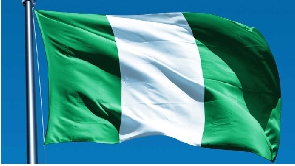There are more than enough opportunities in the economy to invest the over GH¢5billion fresh capital expected from the increment in stated capital of banks, Patrick Fiscian-Managing Director of Heritage Bank, has said.
Some industry players have warned that if care is not taken some banks, after raising the fresh capital, could go on a lending spree and worsen the already precarious Non-Performing Loans (NPLs) situation.
According to Patrick Fiscian, a lot of investment is needed, anyway; saying the banking sector’s total capitalisation accounts for only 2.2 percent of Gross Domestic Product (GDP).
If banks exist to support businesses and their ability to support the economy stands at 2.2 percent, then there is room for banks to do more business, he said.
“In terms of opportunities in the marketplace, there are a lot of projects that are being funded by external sources; and so, we believe that there are business opportunities out there,” he told the B&FT.
“When you talk of capacity to deploy these funds, capacity has to do with the capabilities of the management team, risk systems, products and services to be rolled out. And at GH¢400million, which is less than US$100million, the capitalisation of the banking sector cannot allow for serious banking looking at the size of our economy,” he said.
“If we are increasing the level of business activity, you expect to see increment in NPLs; but not as high as we are witnessing currently. The monies we are talking about will not create a glut in terms of funds available for investment,” Mr. Fiscian said.
Since announcement of the increment in stated capital of universal banks from GH¢120million to GH¢400million by the central bank in September, some industry players have cautioned about a possible spike in NPLs due to a market oversaturated with capital.
Banks’ stock of NPLs stood at GH¢8.30billion as at end-October 2017, up from GH¢6.52billion in October 2016.
The current stock of NPLs, though high, signals a slow annual growth to 27.2 percent from 58.1 percent in October 2016.
Despite this trend, the industry’s NPL ratio increased to 21.6 percent in October 2017 from 19.0 percent a year earlier, due to a slowdown in the growth of gross loans.
When adjusted for the fully provisioned loan loss category, the NPL ratio declined to 10.5 percent in October 2017 – slightly higher than the adjusted NPL ratio of 10.2 percent recorded in October 2016.
Following restructuring of the VRA and TOR debts in the last quarter of 2016, the public sector’s share of total NPLs fell from 11.3 percent in October 2016 to 5.3 percent in October 2017.
The private sector, being the largest recipient of outstanding credit balances, accounted for the greater proportion of banks’ NPLs – with its share increasing to 94.7 percent from 88.7 percent over the review period.
Indigenous private enterprises accounted for 78.2 percent of total NPLs in October 2017, compared with a share of 75.6 percent in the corresponding period last year.
Click to view details



Business News of Monday, 15 January 2018
Source: thebftonline.com
Economy can easily absorb extra GHC 5bn stated capital - Heritage Bank boss
Opinions
















